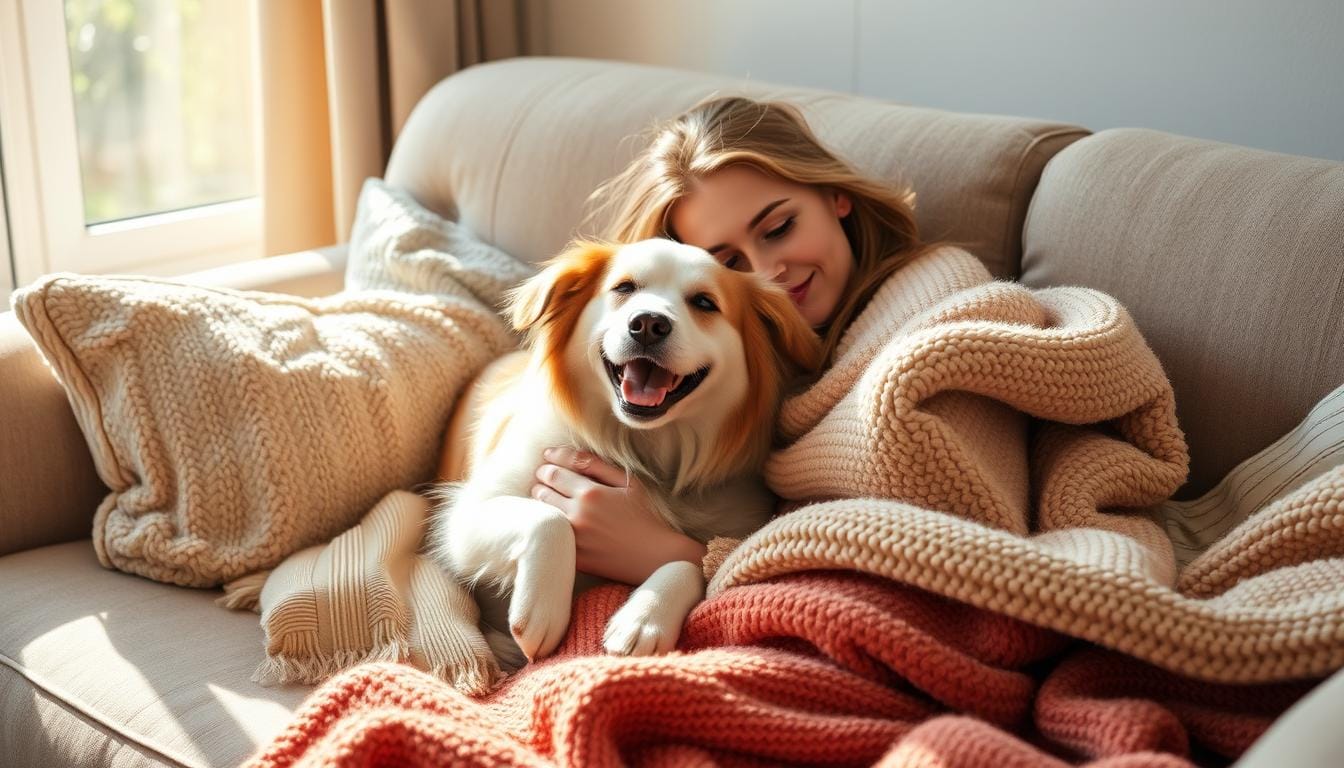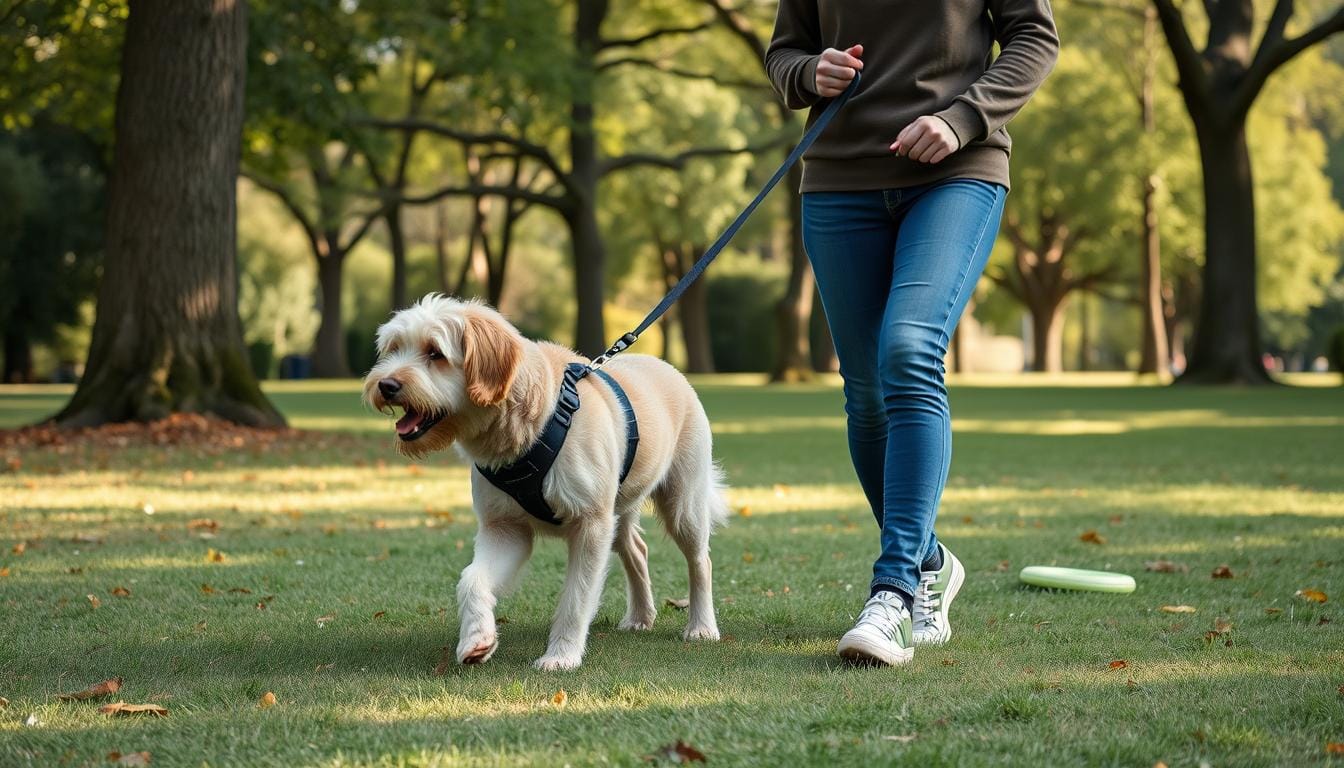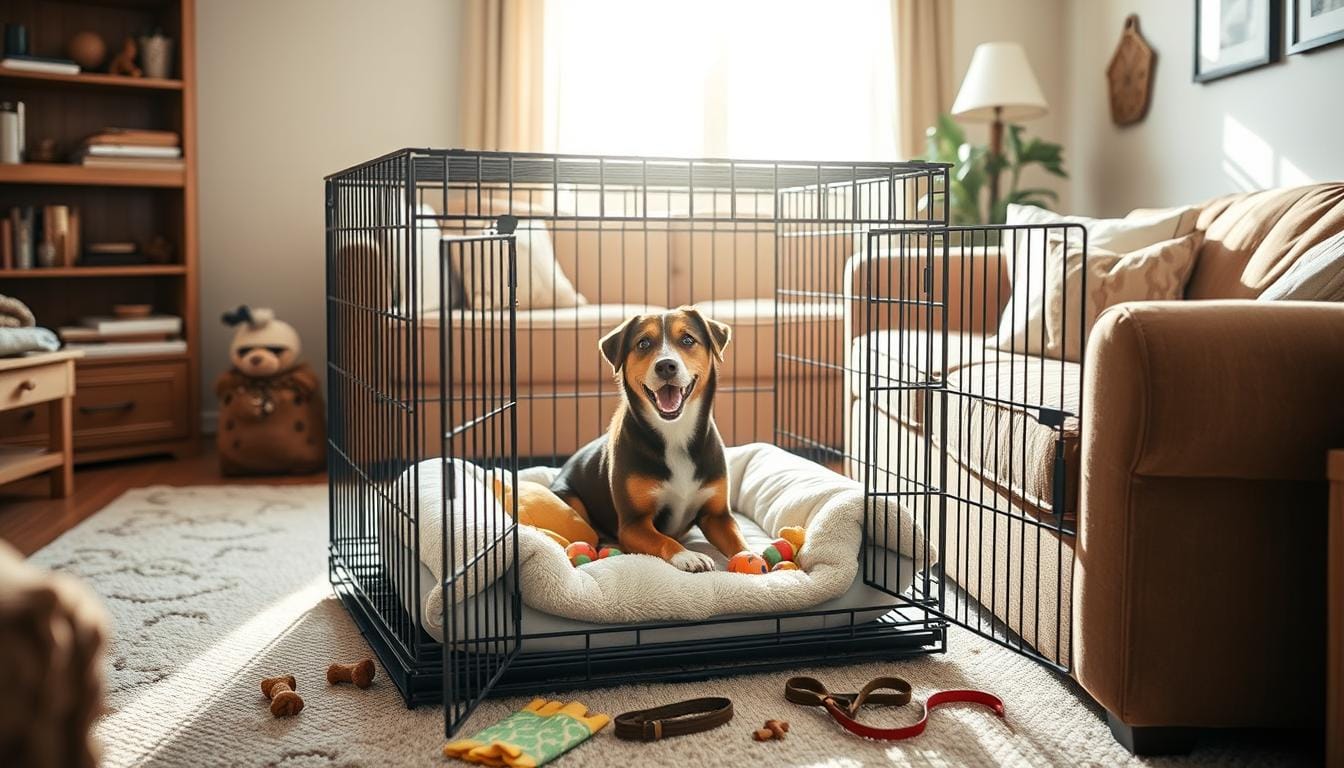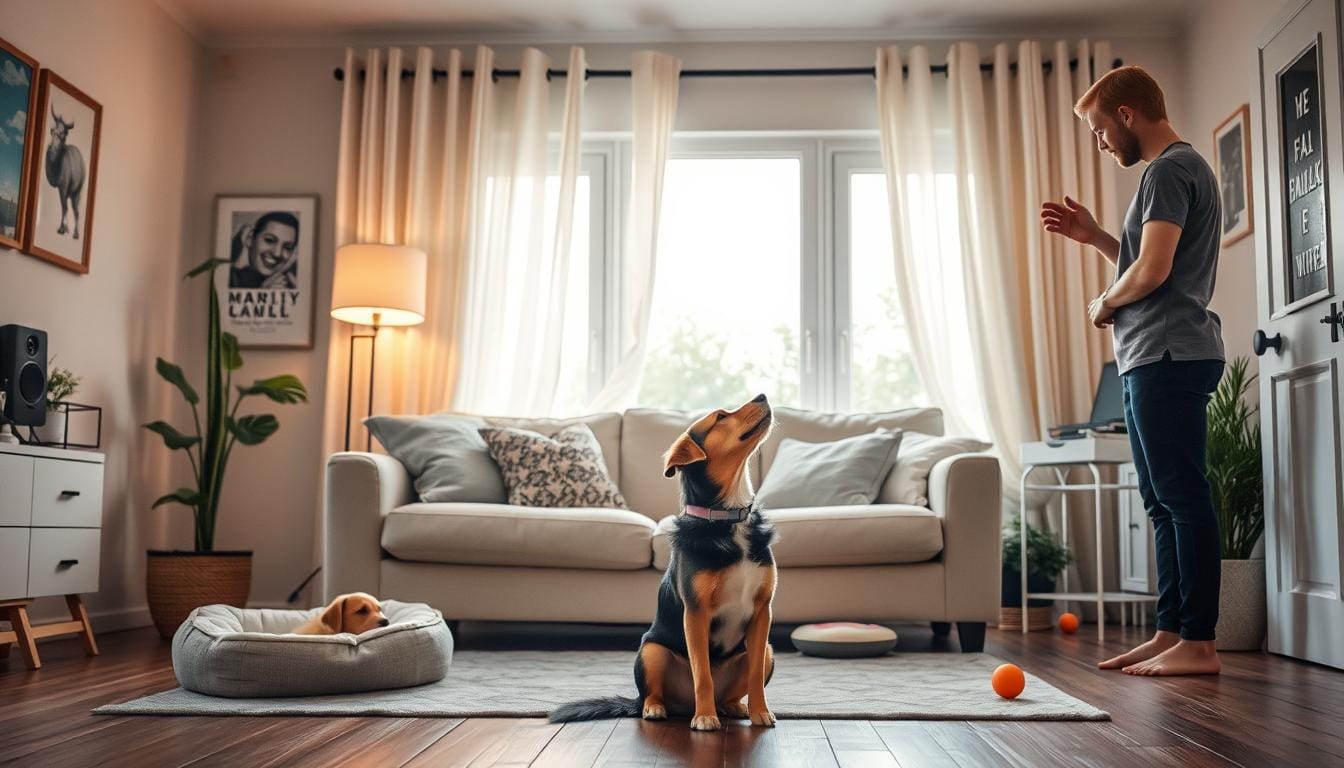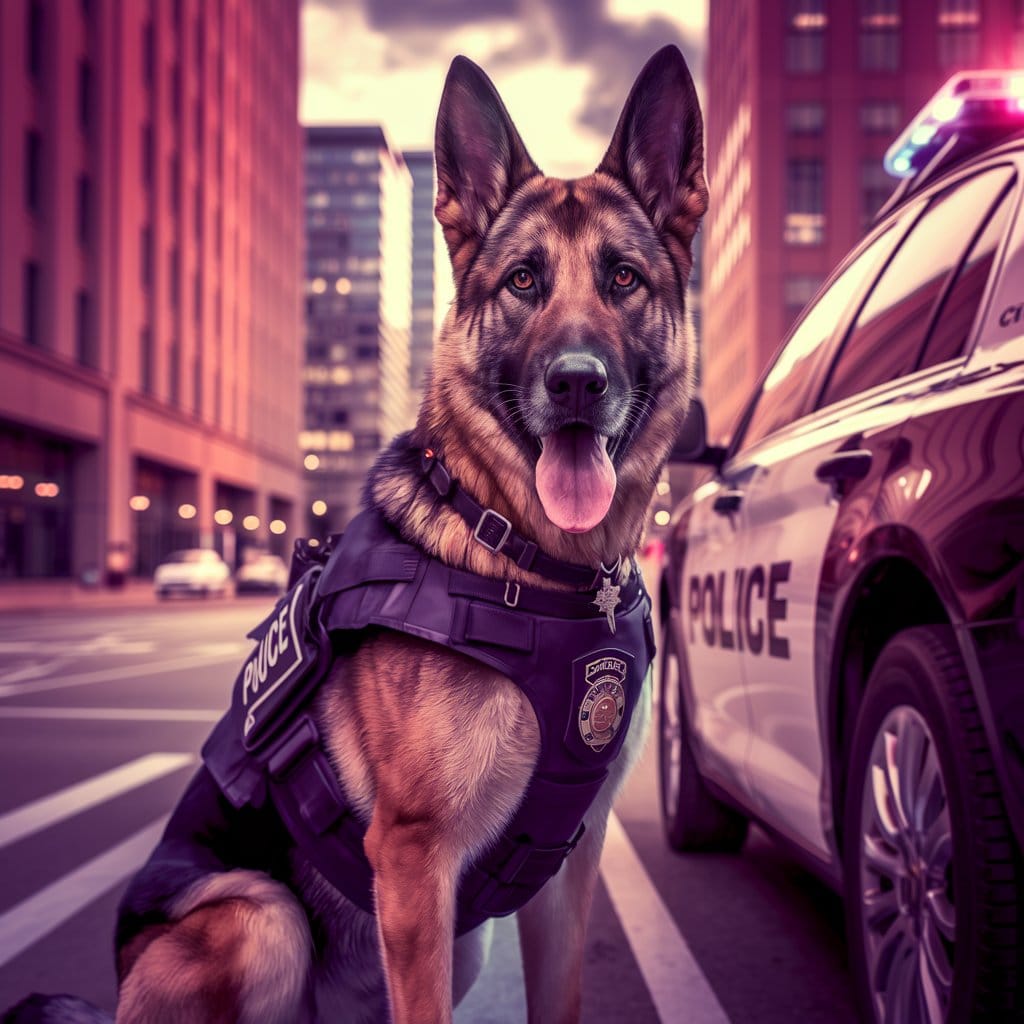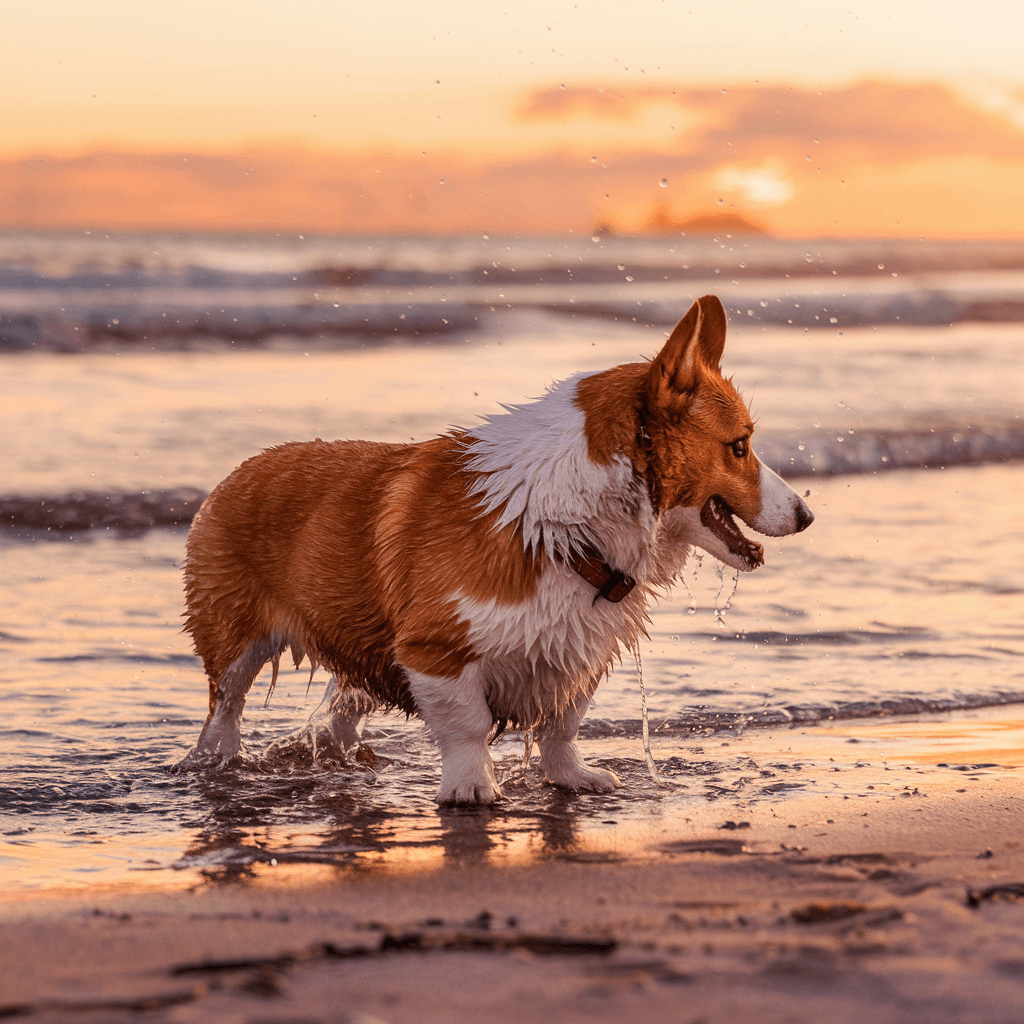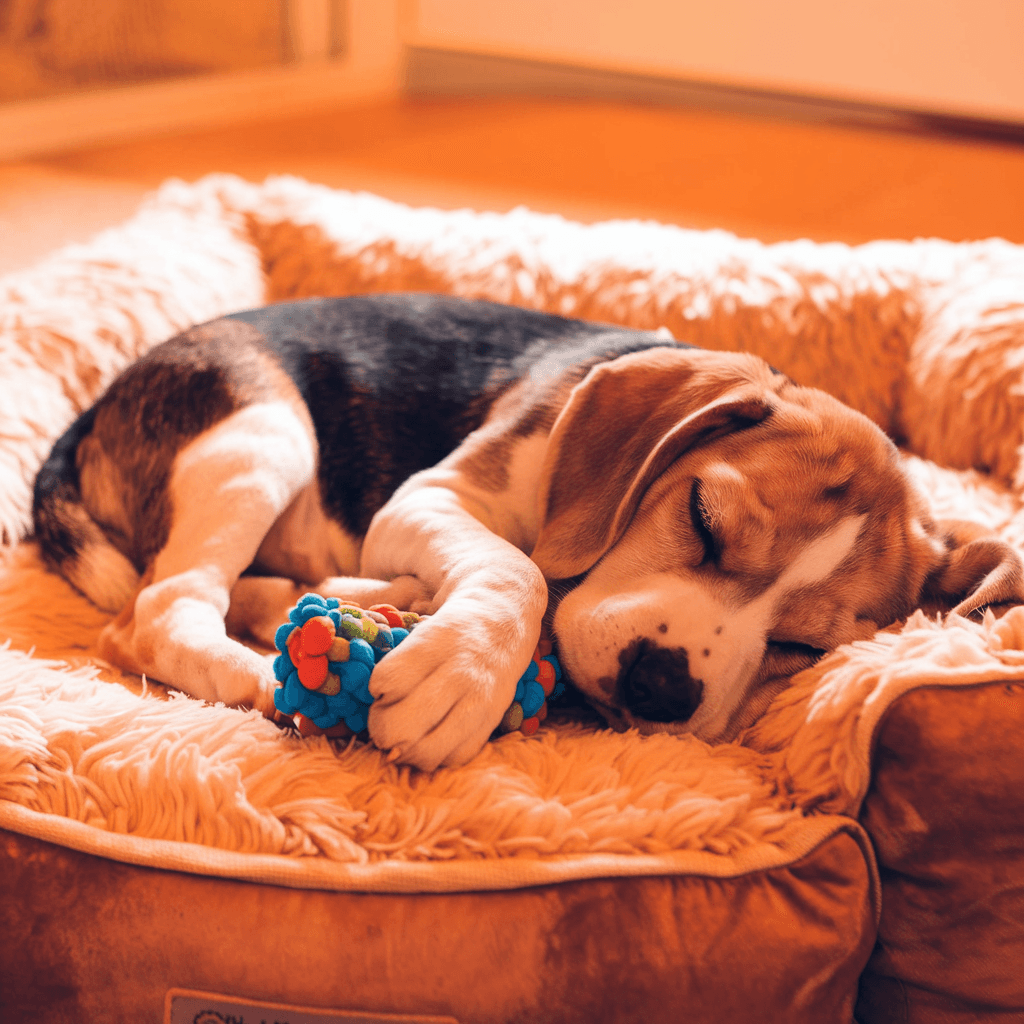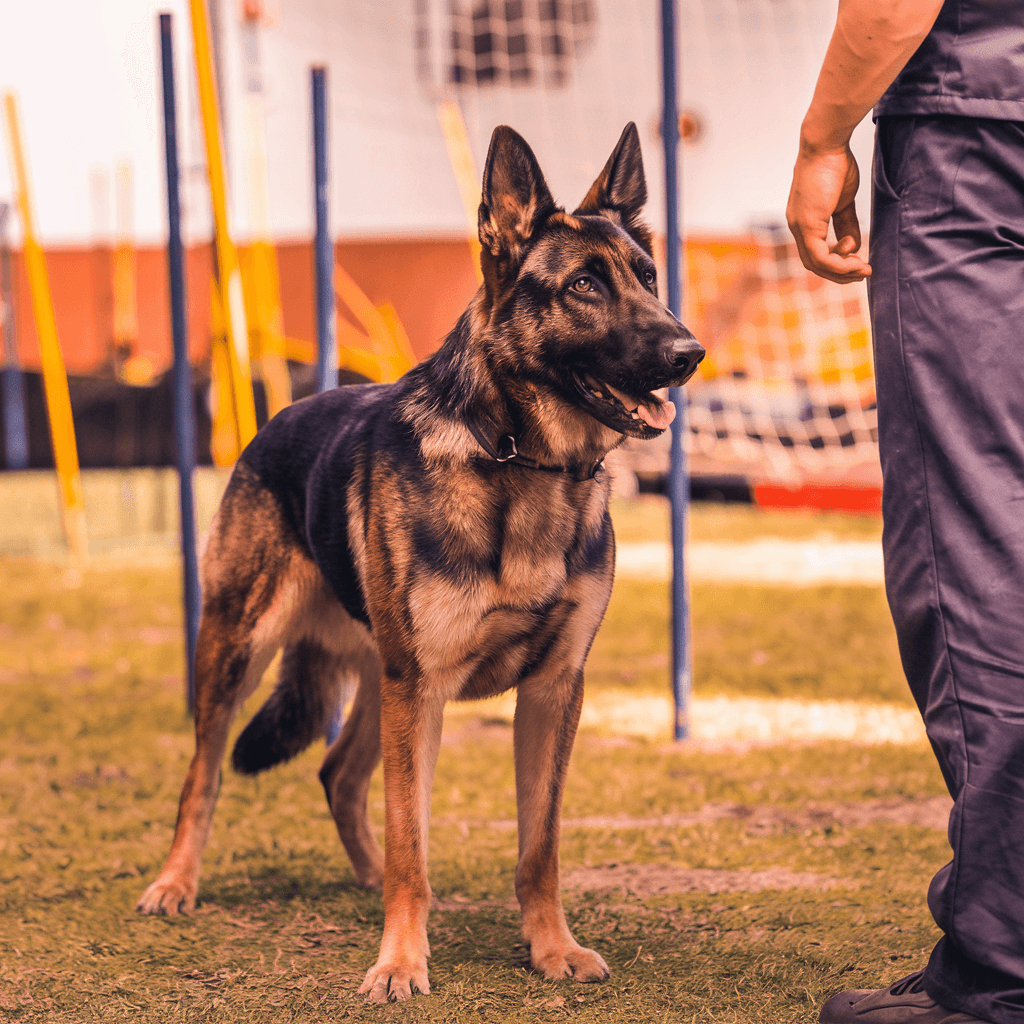Our dogs give us unconditional love, and we should return it. Building a strong bond with them is more than just words. It’s about showing care through actions.
Think of making your pet care routine a celebration of love. Belly rubs, games, healthy meals, and walks all help strengthen your bond. Dogs may not understand our words, but they feel our warmth.
Welcoming a rescue dog into your home requires patience. Building trust takes time, but the rewards are worth it. Look for signs of love like wagging tails and loving licks.
Did you know cuddling with your dog releases happy chemicals in both of you? This shows the special bond we share. By nurturing this connection, we ensure a lifetime of happiness for both dogs and their owners.
Key Takeaways
- Consistent care and actions speak louder than words to dogs
- Building trust is crucial, especially for rescue dogs
- Dogs express love through body language like tail wagging
- Bonding activities include play, walks, and quality time
- Science supports the positive effects of human-dog interactions
- Regular routines provide emotional security for dogs
- Physical affection strengthens the human-canine bond
Understanding How Dogs Perceive Love
Dogs show love in their own special ways. As pet owners, we need to know how they show affection. Studies have uncovered how dogs and humans form strong bonds.
The Science Behind Dog-Human Bonding
Studies show dogs and their owners have a deep emotional connection. A study by Emory University found dogs love their owners’ scent. This shows the strong bond between pets and their owners.
In Japan, researchers found oxytocin levels rise in dogs and owners when they look at each other. This hormone makes their bond stronger.
Reading Your Dog’s Love Signals
Dogs show love in many ways:
- Tail wagging with full-body enthusiasm
- Bringing toys as gifts
- Following you around the house
- Leaning against you for comfort
- Sleeping near or in the same room as you
These actions show trust, attachment, and a desire for closeness.
Building Trust Through Consistency
To build a strong bond with your dog, be consistent. Regular feeding, exercise, and playtime make your dog feel secure. This consistency is key to a loving relationship with your dog.
| Bonding Activity | Frequency | Benefits |
|---|---|---|
| Playtime | Daily | Strengthens relationship, provides mental stimulation |
| Training sessions | 2-3 times per week | Builds trust, improves communication |
| Cuddling | As often as possible | Releases oxytocin, enhances emotional bond |
By understanding and responding to our dogs’ love languages, we create a nurturing environment. This fosters deep pet bonding and ensures happy, well-adjusted companions.
Creating Daily Routines for Emotional Security
Setting up daily routines is essential for our furry friends’ emotional security. As pet parents, we can make a stable home for them. This helps their welfare and strengthens our bond.
Establishing Feeding Schedules
Feeding your dog on a regular schedule is vital. Adult dogs usually do well with two meals a day. Puppies, however, need 3-4 meals to grow right.
Small breeds might need smaller, more frequent meals to avoid low blood sugar. It’s important to keep your dog at a healthy weight. Overfeeding is not showing love; it’s harmful.
Regular Exercise Times
Exercise is key for your dog’s health. Most dogs need at least 30 minutes to an hour of walking each day. High-energy breeds might need even more.
Regular walks keep your dog’s brain active and healthy. This can lead to a longer, happier life for them.
Dedicated Play Sessions
Make time for play each day. These moments are great for your dog’s mind and your bond. Try puzzle feeders, nose work, or teach new tricks.
Positive reinforcement during play encourages good behavior. It makes learning a positive experience for your dog.
By following these routines, we give our dogs a stable, loving home. As they age or face health issues, we must adjust these routines. This ensures their happiness and well-being.
Physical Affection and Touch
Physical touch is a great way to show love to your furry friend. Gentle pats, ear scratches, and belly rubs are loving gestures. They can make your dog happy and strengthen your bond.
Studies show that looking at each other and petting increases oxytocin in dogs and humans. This hormone helps us bond and feel happy. When petting your dog, look for signs like relaxed ears and a happy mouth.
The best spots to pet your dog are:
- Ears
- Chest
- Upper back
It’s key to watch your dog’s body language. A wagging tail to the right means they’re relaxed. A wag to the left might mean they’re feeling defensive. This helps you know if they like being petted.
“The best thing about dogs is their ability to make any situation better just by being there.”
Every dog is different. Some like cuddling, while others prefer playing fetch. Find what makes your dog happy and do it often to grow your bond.
Dog love, bonding with pets, happy dogs, pet care
Pet bonding is a magical experience that brings joy to both humans and their furry companions. We’ve discovered fascinating insights into the deep connections we share with our joyful pups. Let’s explore how to nurture these special relationships and practice responsible pet ownership.
Understanding Different Love Languages
Just like humans, dogs have unique ways of expressing and receiving love. Some pups thrive on physical affection, while others prefer quality time or tasty treats. Recognizing your dog’s love language is key to strengthening your bond.

Building Lasting Connections
Creating a strong bond with your dog involves consistent care and respect. Regular exercise, playtime, and training sessions all contribute to a happy, well-adjusted pup. Remember, a tired dog is often a well-behaved dog!
Creating Positive Associations
Positive reinforcement is crucial in pet care. Rewarding good behavior with treats, praise, or favorite activities helps create a loving, trusting relationship. This approach not only makes training easier but also enhances your overall bond.
| Love Language | Expression | How to Nurture |
|---|---|---|
| Physical Touch | Cuddling, leaning against you | Regular petting, gentle massages |
| Quality Time | Following you around, seeking attention | Dedicated playtime, walks together |
| Food Rewards | Excitement at mealtime, treat-motivated | Healthy treats, food puzzles |
By understanding and catering to your dog’s individual needs, you’ll create a loving environment that promotes happiness and wellbeing for both you and your furry friend. Remember, responsible pet ownership is about more than just providing food and shelter – it’s about nurturing a meaningful, lifelong bond.
Quality Time and Focused Attention
Spending quality time with our furry friends is key for their happiness and our bond. Giving our dogs our full attention makes them feel loved and valued. It’s good for us too!
Pet owners often feel less stressed and have lower blood pressure. Playing with pets boosts serotonin and dopamine, making us calm. These moments are crucial for our mental health and our pets’ well-being.
To enjoy quality time with your dog, try these activities:
- Go on adventures together, exploring new places
- Play interactive games without distractions
- Cuddle during quiet moments at home
- Practice training exercises to keep their mind sharp
Make sure to set aside time just for your dog. This helps prevent boredom and keeps them mentally active. Dogs love to interact, and these moments are great for their emotional health.
“The time you spend with your dog is never wasted. It’s an investment in both of your happiness.”
By focusing on quality time, we’re not just caring for our pets. We’re building a relationship filled with joy, companionship, and love.
Food and Treats as Expressions of Love
Showing love through food is a powerful way to create paw-sitive vibes with your furry friend. We know that treats play a big role in expressing affection to our dogs. But it’s crucial to balance this with responsible pet ownership.
Healthy Treat Options
Treats should make up no more than 10% of your pup’s daily calories. Opt for healthy options like small pieces of fruits or veggies. For special days, like National Love Your Pet Day on February 20th, a small treat like a quarter of a cupcake per 25 pounds of body weight is okay.

Special Occasion Rewards
Did you know that 68% of dog owners involve their pets in holiday celebrations? It’s a great way to create lasting memories. Consider making DIY treats at home – 47% of owners do this to bond with their pets. If you’re short on time, 29% opt for fancy store-bought treats.
Using Food for Training and Bonding
Food is an excellent tool for training and strengthening your bond. Studies show that dogs often choose their owners over food, but they love both equally. Use high-quality training treats to reinforce positive behaviors. Remember, the key is moderation and choosing nutritious options to keep those tails wagging!
“Food is not just sustenance for dogs; it’s a language of love that, when used wisely, can deepen the bond between you and your furry companion.”
Physical Exercise and Mental Stimulation
Keeping our furry friends active is key for their well-being. Regular exercise and mental challenges help raise joyful pups. Let’s see how physical activity and brain games boost your dog’s happiness and health.
Physical exercise is vital for your dog’s health. It keeps them at a healthy weight, strengthens their heart, and builds muscle. A tired dog is a happy dog, and regular activity improves sleep and reduces behavioral issues.
Mental stimulation is also crucial in pet care. Puzzle toys and training exercises keep your dog’s mind sharp. These activities prevent boredom, reduce anxiety, and improve cognitive function. Engaging your pup’s brain is as important as exercising their body.
| Exercise Benefits | Mental Stimulation Benefits |
|---|---|
| Maintains healthy weight | Prevents boredom |
| Strengthens heart | Reduces anxiety |
| Builds muscle mass | Improves cognitive function |
| Improves sleep quality | Enhances problem-solving skills |
The right amount and type of exercise depend on your dog’s age, breed, and health. High-energy breeds need more vigorous activities, while older dogs do better with gentler exercises. Even 10-15 minutes of daily activity can greatly benefit your dog’s health.
Combine physical exercise with mental challenges for the best results. This ensures your dog stays healthy, happy, and well-behaved. Regular outings also help with socialization, which is vital for your dog’s development and behavior.
Respect and Understanding Boundaries
We must respect our dogs’ boundaries as responsible pet parents. This builds trust and shows love. Learning to read body language and create safe spaces is key.
Reading Body Language
Dogs use physical cues to communicate. Tail positions, ear movements, and facial expressions are important. By understanding these signals, we can meet our pets’ needs and know how they feel.
Recognizing Stress Signals
It’s vital to spot stress in our dogs. Look for signs like yawning, a tucked tail, and flattened ears. Also, watch for whale eye and excessive panting.
- Yawning or licking lips
- Tucked tail
- Flattened ears
- Whale eye (showing whites of eyes)
- Excessive panting
Knowing these signs helps us address our dogs’ stress. This can prevent behavioral problems.
Creating Safe Spaces
Every dog needs a quiet, comfy spot to relax. A crate or cozy corner is a great safe space. It’s important that all family members and guests respect this area. This lets our dogs feel safe and loved.
| Action | Benefit |
|---|---|
| Respect boundaries | Builds trust |
| Read body language | Improves communication |
| Recognize stress signals | Prevents behavioral issues |
| Create safe spaces | Enhances emotional security |
Understanding and respecting our dogs’ boundaries makes a loving home. This strengthens our bond with them. It ensures a happy and healthy life together.
Social Activities and Enrichment
Engaging in social activities and enrichment is key to fostering pet bonding and ensuring doggy delight. We recognize the importance of these activities in promoting canine companionship and overall well-being.
Organizing Playdates
Setting up playdates with compatible dogs offers valuable socialization opportunities. These interactions help strengthen social skills and provide mental stimulation. Remember to choose playmates carefully, considering your dog’s temperament and energy level.
Exploring New Environments
Taking your furry friend to new places stimulates their senses and enhances cognitive function. Visits to dog-friendly parks, beaches, or hiking trails can be exciting adventures. These outings contribute to pet bonding by creating shared experiences.
Interactive Games and Activities
Engaging in fun games strengthens the bond between you and your dog. Hide-and-seek, fetch, or puzzle toys provide both physical exercise and mental engagement. These activities are essential for maintaining your dog’s cognitive health and promoting doggy delight.
| Enrichment Activity | Benefits | Examples |
|---|---|---|
| Cognitive Enrichment | Improves problem-solving skills | Puzzle toys, scent work |
| Physical Enrichment | Promotes overall health | Agility courses, fetch |
| Social Enrichment | Enhances social skills | Dog parks, playdates |
| Environmental Enrichment | Reduces stress and anxiety | New walking routes, sensory gardens |
By incorporating these enriching activities into your dog’s routine, you’re not just ensuring their happiness but also strengthening your bond. Remember, a mentally stimulated dog is a happy dog, leading to a more fulfilling canine companionship.
Conclusion
We’ve looked at many ways to show love to our dogs and make them happy. Our pets bring so much joy to our lives. It’s important to show them the same love back. Studies show that humans and dogs have a special bond, with both feeling happy when they look at each other.
It’s important to care for our dogs consistently and spend quality time with them. Understanding their boundaries is also key. Growing up with a dog can lower anxiety by 12% later in life. Dogs also help us stay healthy, with dog owners walking more than those without pets.
Every dog is unique, so we need to tailor our care to their needs. Regular vet visits, good food, and training are all part of being a responsible pet owner. By doing these things, we make sure our dogs feel loved and are part of the family.

